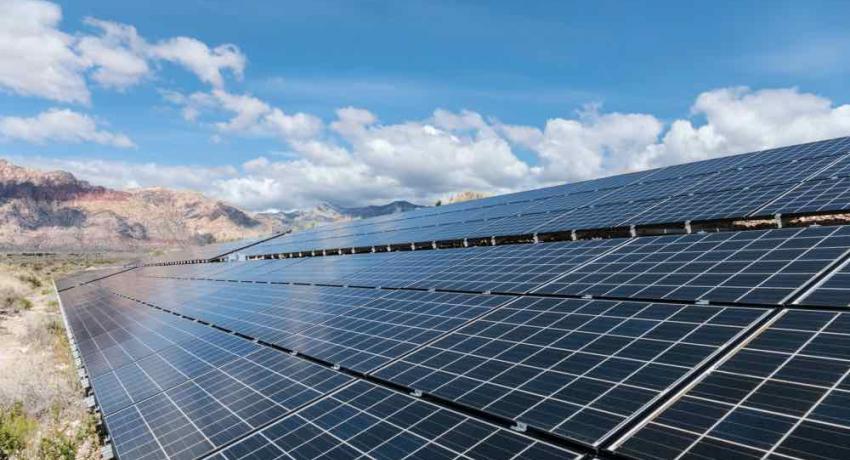Infrastructure Plan Supports Solar Power, Energy Storage
The post Infrastructure Plan Supports Solar Power, Energy Storage appeared first on POWER Magazine.

Energy industry analysts have said government support will be needed to help the sector recover from the COVID-19 pandemic, and Democrats in the U.S. House of Representatives have introduced legislation that includes measures to help the solar and energy storage industries.
The $1.5 trillion infrastructure bill introduced in the House on June 22, known as H.R. 2 or the Moving Forward Act, contains provisions in support of the solar and storage sectors. They include an investment tax credit (ITC) for standalone energy storage, extending a 30% solar ITC through 2025, and creating a direct pay mechanism that can be used in lieu of the ITC.
Lawmakers said they hope to vote on the bill in the House before the July 4 holiday.
We know that the with the right policies in place, including many of those proposed in the Moving Forward Act, clean energy can add hundreds of billions of dollars in investment and perhaps a million or more jobs back into the economy," Abigail Ross Hopper, president and CEO of the Solar Industries Association (SEIA), said in a statement.
Money to Fix Roads, BridgesThe bill also includes $300 billion earmarked to build and fix roads and bridges. It also invests in programs to reduce carbon pollution. Rep. Peter DeFazio, a Democrat from Oregon and chairman of the House Transportation and Infrastructure Committee, has said the legislation applies the principles of the Green New Deal.
According to SEIA, the bill includes:
- A 5-year extension of Section 48 and 25D of the Investment Tax Credit (ITC) at 30% through 2025, followed by a two-year phase-down (2026 at 26% and 2027 at 22%).
- Direct pay proposal at 85% for Section 48 qualifying projects for the same amount of time as the PTC/ITC credits exist.
- An ITC for standalone storage projects.
- Proposals to incentivize investment in clean energy for low-income and underserved communities.
- Tax credits for clean energy manufacturing.
- Provisions for grid modernization.
- Funds for transmission planning with a requirement to account for renewable energy generation.
- A grant program for solar installation in low-income and underserved communities.
- Funds for renewable energy installation in community institutions, such as schools.
- Improvements to public lands renewable energy development programs.
Richard Neal, a Massachusetts Democrat and chair of the House Ways and Means Committee, has said the plan could be financed by Build America bonds. We propose private activity bonds," he said at a media briefing on June 18. We propose, obviously, some borrowing based upon what [Federal Reserve Chairman] Jay Powell indicated in the last couple of weeks, that interest rates are going to stay where they are ... almost at zero for years to come. And the president, as you know, has said $2 trillion of borrowed money. He staked out that position. So we think that on the revenue side, we're open to discussions and negotiations. But with build America bonds, private activity bonds and some borrowing, we think that by putting out our plan here, [there is] time to have the conversation, time to negotiate it."
Kelly Speakes-Backman, CEO of the Energy Storage Association and one of the keynote speakers for POWER's Distributed Energy Conference later this year, said that ITC eligibility for storage could help the sector offset project delays, and weather the reduced number of projects being deployed, due to the pandemic. Speakes-Backman in an earlier interview with POWER had said This was expected to be a banner year" for energy storage projects. We're going to see a real hit on that, especially with behind-the-meter projects," she said, noting that delays have been caused by the ability to get equipment from China ... 70% of global production capacity for batteries and components come from China. Since the impact of COVID moved into the United States, it's the work restrictions, permitting issues."
Gregory Wetsone, president and CEO of the American Council on Renewable Energy, said The [entire] renewable sector continues to be in need of common-sense emergency relief to mitigate ongoing pandemic-related impacts in forthcoming COVID legislation."
$70 Billion for Electric GridThe bill introduced Monday proposes investing more than $70 billion to transform the U.S. electric grid to accommodate more renewable energy resources. It would expand renewable energy deployment, strengthen infrastructure, and help with the development of an electric vehicle charging network.
The legislation also creates a grant program that could expand renewable energy access to low-income homeowners, along with multi-family affordable housing complexes. The program also targets underserviced solar areas," defined as areas with low or no solar power deployment. The bill also includes grants for energy efficiency and renewable energy improvements that could help U.S. public schools reduce their energy costs.
President Trump has talked about implementing a $1 trillion infrastructure plan for the U.S. and made it part of his 2016 campaign, but so far it has not materialized. Lawmakers on both sides of the aisle have said a plan to upgrade the nation's infrastructure could be key to an economic recovery from the coronavirus pandemic.
We look forward to working with bipartisan leaders in the House and Senate on policies that help put American solar workers in a position to lead economic recovery from the COVID-19 economic crisis," said Hopper. We know that with the right policies in place, including many of those proposed in the Moving Forward Act, clean energy can add hundreds of billions of dollars in investment and perhaps a million or more jobs back into the economy."
-Darrell Proctor is associate editor for POWER (@DarrellProctor1, @POWERmagazine).
The post Infrastructure Plan Supports Solar Power, Energy Storage appeared first on POWER Magazine.